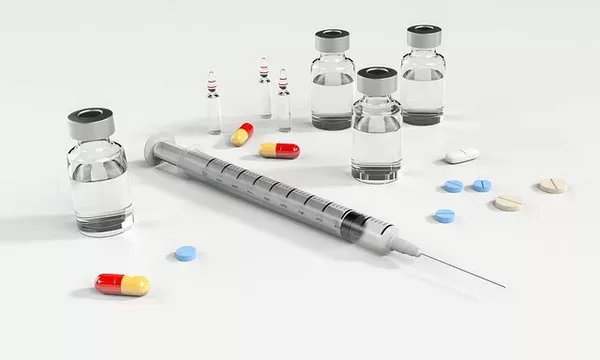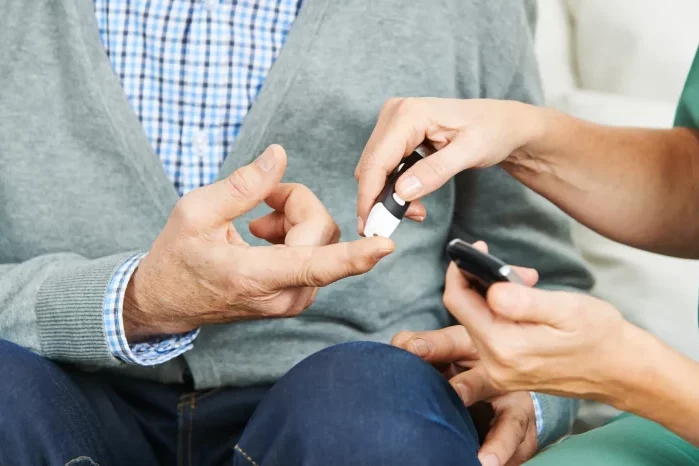After being diagnosed with type 1 diabetes just days after my 17th birthday, my teenage years were shadowed by warnings of potential blindness and other serious complications. Well-meaning friends and family constantly shared stories of how the disease could steal a person’s vision, and my endocrinologist would often remind me to control my blood sugar levels to prevent such outcomes. But despite hearing these messages, I never truly thought I would be the one facing them.
Each year, during my eye exams, my doctors would reassure me that my eyes appeared healthy, yet behind the scenes, I struggled with managing my diabetes. Fear of hypoglycemia kept me from properly regulating my blood sugar levels, and I kept my levels high to avoid the possibility of a deadly low. This dangerous balancing act would eventually catch up with me.
A Shocking Diagnosis
At 31, I noticed my vision becoming blurry, and I assumed it was simply a sign that I needed glasses. However, a visit to my eye doctor quickly revealed the truth: “You have diabetes behind your eyes,” she said, in shock. She handed me a referral to a specialist and left me reeling. I didn’t understand the gravity of the situation, but her reaction told me it was serious.
The Road to Treatment
I saw a retina specialist soon after, where the reality hit hard. I was diagnosed with severe diabetic macular edema (DME) and diabetic retinopathy (DR), which had already progressed to the more dangerous proliferative retinopathy. The doctor informed me that without immediate treatment, I was at high risk of losing my vision. The first step was eye injections, a terrifying prospect. “Injections in the eye?” I asked in disbelief. The answer was yes, and I felt my knees give way as fear overwhelmed me.
In the following weeks, I underwent my first injection, followed by laser treatments. The process became a routine that continued for several years. I grew accustomed to the injections, though the anxiety before each visit remained. Despite the pain and uncertainty, I maintained a strict regimen of eye care, and with the encouragement of my doctors, I committed to improving my overall health.
The Relentless Nature of DME
Years of treatment passed, and while my eye health showed signs of improvement, the damage from my long-standing diabetes was unrelenting. At one point, I even developed stage 3 chronic kidney disease, adding another layer of complexity to my already overwhelming health struggles. My world became consumed by medical appointments, but I persisted.
I vividly remember a dinner with coworkers when I noticed what appeared to be gnats flying around, only for my colleague to point out there were no bugs. It was then that I realized the black spots I was seeing were actually hemorrhages in my eyes, a symptom that pushed me into more intensive laser treatments. The pain from the lasers was excruciating, but it was necessary to preserve my vision.
The Long-Term Reality
As I neared the end of my third year of treatment, I asked my doctor about the long-term outlook. His blunt response was both sobering and reassuring: “This may be a lifelong process.” His honesty was difficult to hear, but knowing that he was there for the long haul helped me find strength.
I worked hard to accept the possibility of permanent vision loss, using meditation to manage my anxiety and connecting with others who understood my journey. I cherished the images and memories of the world I loved, in case I ever had to close my eyes forever.
A Fragile Stability
From 2015 to 2021, I endured countless treatments, including about 60 injections, over 40,000 laser burns, two vitrectomy surgeries, and two cataract surgeries. Thankfully, after four years without treatment, my eyes remain stable. My right eye has 20/20 vision, while my left eye fluctuates between 20/30 and 20/40, with some central vision loss. Though my vision is far from perfect, it has stabilized, and my retina specialist continues to monitor my condition closely.
Coping and Advice for Others
The journey of living with DME is different for everyone. While I’ve found stability, many others still struggle with their vision. If you are newly diagnosed, remember that your experience may differ. It’s important not to compare your progress to others and to advocate for yourself at every step. Seek support, stay hopeful, and be kind to your body. Our bodies are always listening, and what we say and think can make a difference in our healing.
Related topics:
Emerging Research Sheds Light on New Dementia Causes: Diabetes and Herpes
New Medical Database Enhances Obesity Research and Treatment
























